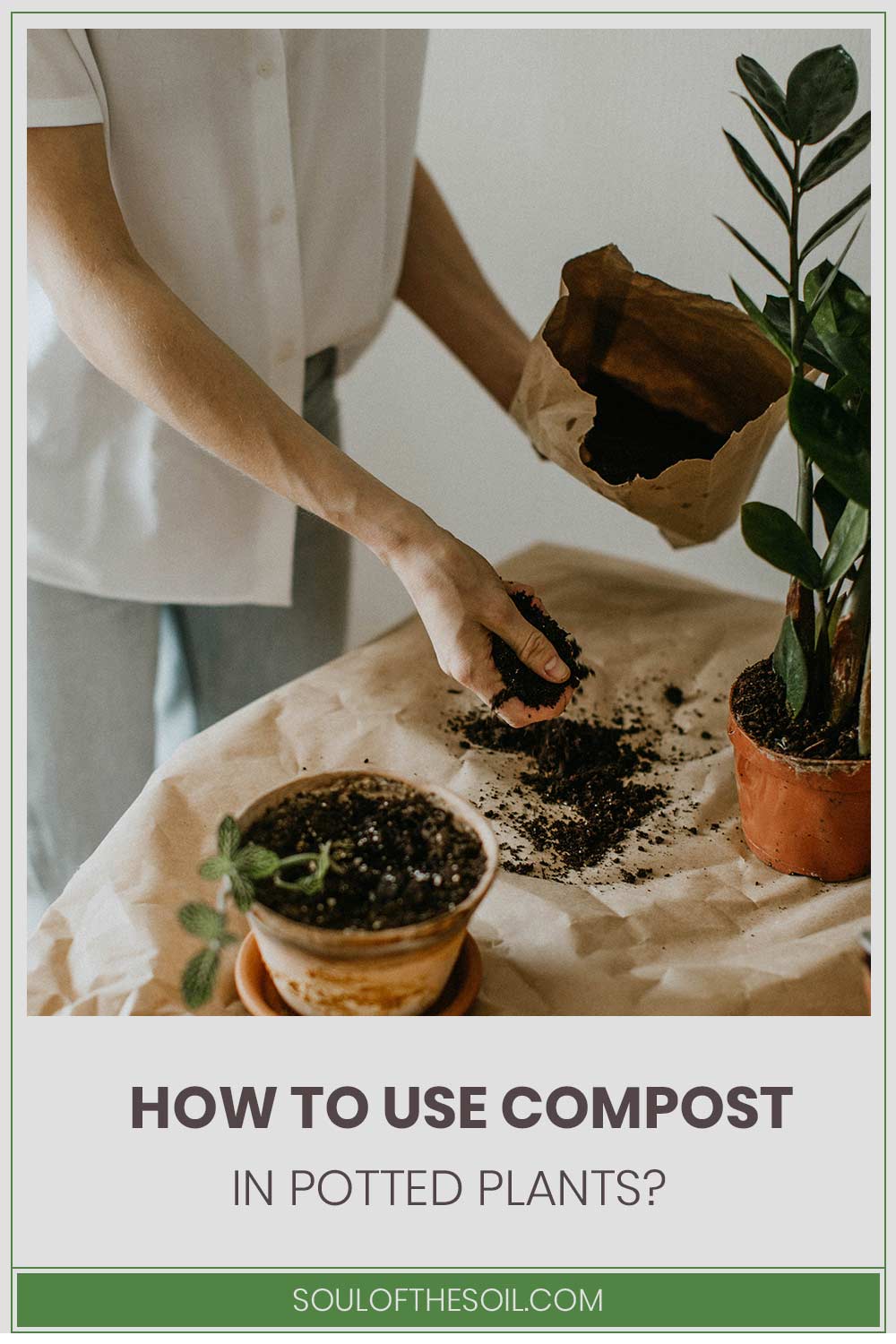How To Use Compost In Potted Plants?
We may earn commissions for purchases made through links on our site. Learn more on our about us page.
Before introducing compost to the potted plants, a few steps will be needed, and store-bought materials should be inspected to ensure they are the correct type.
If you use homemade compost, use a mixture of green materials such as grass clipping and vegetable scraps and brown materials like leaves and twigs.
Once introduced, water the new mixture, and remember that compost is a living material and will need to be refreshed every three or four months to keep the beneficial effects active in the soil for the plants.

Can You Just Put Compost on Top of the Soil?
There is a general rule of thumb when using compost as a topsoil, will be to apply a one to four-inch thick layer, depending on the size of the pot being used.
This is because all the biological benefits and nutrients will seep into the soil below and slowly do so over time, providing a layer of insulation and a protective barrier against weeds.
The composting processes that decompose plant material will release those nutrients into the soil, which will naturally benefit the plant life within the roots’ reach.
How Should You Mix the Compost properly?
There will be automated and manual mixing of the compost properly; the best solution is to mix the soil before placing them in the pot. There are tiller machines that will churn the soil and are used in many gardens; otherwise, there are manual ways of working the dirt.
Home garden tools such as a spade can be used to till the soil, which can be the solution for simple tiling projects.
Otherwise, there is going to be a majority of gardeners who will recommend adding compost on top of the existing soil to allow the fungi–root systems to maintain their hold in the ground.
Can You Use Just Compost?
There is no substitute for sound soil; just straight compost will be exactly what your bare soils need for a healthy rejuvenation.
In addition, if you have new plants, including potted ones, there will be some exponential benefits to repotting into compost soils; doing so will allow a gardener to mix the old potting soil into the compost pile, which will enrich it anew for the next repotting process.
As a reminder, match your compost materials with the correct type of plant being grown. From there, the differences in plant health and growth will be noticeable.
How Long should Compost Sit before use?
New soils and materials added to the compost need at least four weeks to cure and become enriched. This is the quickest turnaround possible, but for the best results and richest soils, there will need to be a period of a year before using any of the material.
The best processes include the continuous cycle of using compost and reintroducing new bio-materials to keep fresh soil available year-round if maintained efficiently.
Once these well-maintained composts get set up and have been living for a few years, a gardener will have greater freedom when it comes to using the soils from the compost.
How Much Compost Do You Add to Potting Soil?
The ratio is simple; for every four parts of soil, a gardener should add one part of the compost. In general, there are many different compositions of soil to compost.
For instance, vegetable gardens will benefit from a five-to-one ratio, while trees and shrubs will prefer only ten percent compost mixtures and to stay in the ground when possible.
When creating these mixtures, be sure to reference an expert, do some research on the plant you wish to grow, and from there, create the perfect mixture of materials to promote the growth of that plant.
Final Thoughts on How to use Compost in Potted Plants
It is an intricate design for specific compost and soil mixtures for specific plant life types.
Before getting into this stage of compost usage, make sure to churn and build a solid pile of material first, which will take some time, mind you, but when the time comes a few years down the road, you will be happy you put in the work.
A reminder for those newer gardening minds, remember to look into the needs of the plants you wish to grow; certain organic materials are best used with similar plant life. For instance, potato peel compost will positively benefit growing potato plants.



Leave a Reply
You must be logged in to post a comment.